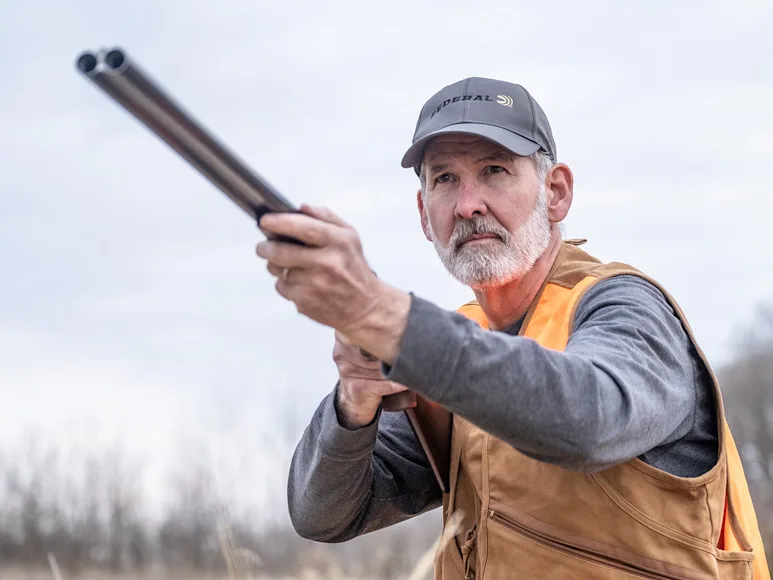Everybody has shots they struggle with in the field. It’s embarrassing to admit, but for me, one of the toughest shots is a dove floating in to a spinning wing decoy. That slow, bobbing approach gives me way too much time to think and look back and forth from beak to bead. The second shot, as the dove flares away from the miss, is no problem, but I shouldn’t have to shoot twice at a slow-moving dove.
You may clean up on slow doves, but struggle with another shot. There’s no shortage of tough chances in the field. Looking back across many years of hits and misses, I came up with a list of North American wingshooting’s toughest shots and what to do about them. Here they are, in a (roughly) ascending order of difficulty.
Flushing Rail
I think it’s just me who finds flushing rails hard. They give me fits and they never should. They are slow, gangly fliers who stay low when you kick them up in the marsh. The problem with rails is they make very short flights, so short, that I often hold off on them so I won’t mangle the bird when I shoot, and just when I think they are far enough out, they land, and they are nearly impossible to reflush.
I think the answer is to take a little, open choked gun, a 28-gauge or a .410, and blaze away. Then the rails aren’t tough to hit, and you’ll still have something left to eat.
Straightaway Pheasant
A straightaway pheasant seems like an odd choice for one of the toughest shots in wingshooting, but it’s one we should all be 100 percent on, and nobody is. It’s deceptively difficult, as reflected by the trapshooter’s dictum that they “fear the angles and miss the straightaways.” A going-away pheasant presents a small target, and it takes a small, controlled move to put the shot onto a straightaway.
You will read in pieces like this one that shooters are distracted by the bird’s tail, but if that were true, people should shoot the tails off of pheasants and I’ve never seen that happen. Most misses occur over the top, which usually happens when you move too fast, shoot too fast, and look at the whole bird, tail and all, instead of focusing on one part of it.
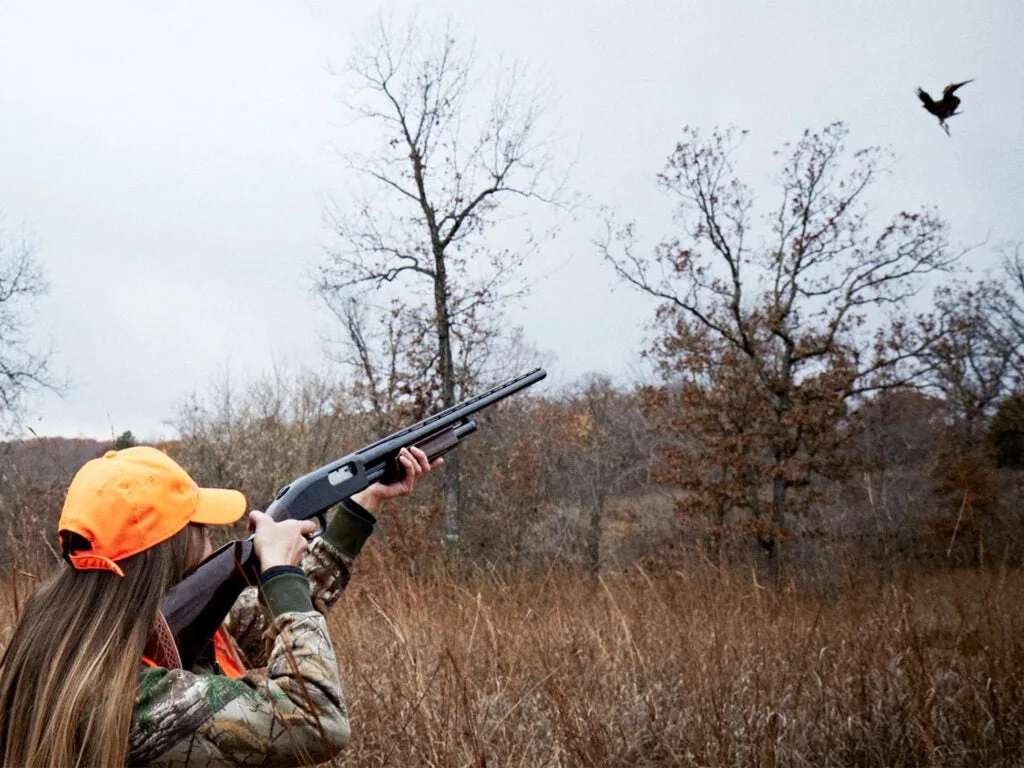
First, take your time. I once killed a flushing pheasant after a friend emptied an unplugged Benelli at a bird that rose at his feet. Second, look, then move. Focus on the bird, take an instant to read its angle (some straightaways are actually gently quartering shots), the push the gun toward it, like you’re trying to stick it with a bayonet. See the bird over the gun, and shoot.
Pheasants are tough birds, and they are hardest to kill cleanly when they are going straight away from you. I’ll take long crossing shots, because the bird’s vitals are exposed, but I try to restrain myself on long, going away shots, especially in heavy cover. It’s better to mark that bird down and try to find it again than to look for a broken-winged cripple. Even good dogs don’t find them all.
Trapshooting is good practice for pheasant shooting, even if you use a trap gun and shoot it pre-mounted. If possible, take your hunting gun to the trap club during a slow time and see if you can stand fairly close behind the house and call for targets with a low gun start.
Dove from Behind
We all have our problem shots in the dove field. I have confessed mine, although it’s not the only one that gives me trouble. The dove that comes overhead from behind is another tough one, largely because it takes you by surprise. If you see it in time, it’s not so bad so long as you remember that in order to lead it you have to shoot under it, not over it.
Move the gun down along the line of flight and shoot when you see the dove above the barrel. Looking at the bead will make you miss this shot behind as will checking the bead to be sure the gun is really below the target.
Fortunately, most sporting clays courses have at least one station that throws a bird over your head from behind, and every single skeet field throws High House 1, which is an exact replica of the dove from behind. Practice it, be ready for it, and you can make this shot.
Teal in the Decoys

It’s small consolation to learn that teal fly slower than big ducks. It’s their unpredictability, erratic flight, and habit of staying down on the deck that makes them seem fast, and lets them catch us unprepared time and time again.
Teal are also small enough that it’s easy to overestimate range. Pick one bird out of the flock. I usually try to choose one on the outside edge if they’re coming at me or going away, or the tail-end bird if they’re crossing. That way I don’t wind up hitting more than one bird and risk going over my limit.
Stay ready, look for the beak or even the eye, and shoot right at the head. You don’t need to lead teal much at all. An open choke and small shot, help, too. Teal are small enough that 4, 5, or even 6 shot work, and the increased pellet count of small shot gives you more pellets in the pattern fringe to increase your margin for error, and you will make errors shooting at teal.
Quail Covey Rise
Quail use sensory overload as an escape tactic, blowing up and buzzing away at once to sow maximum visual confusion. The first time I stepped into a covey, it was as if pieces of the earth were growing wings and flying all around me, and I emptied my gun practically in self-defense, hitting nothing at all.
Shooting too fast is an error, but you have to be decisive. Flock shooting rarely works. Pick a bird. Then really look at it. My frequent hunting partner picks out the white heads of the roosters and rarely shoots a hen. That level of focus makes hitting quail a lot easier. Stay with the bird you’re shooting at until it falls. Assuming you have a shell left, you can either look for the double, or you can wait on the “widow”—the late flushing bird in many coveys that gets up after all the rest have gone.
If shooting coveys of bobwhites gets too easy, you can try Mearns quail in the southwest. The coveys are slightly smaller, the birds slightly bigger, and it’s easy to tell the roosters from the hens. But, the terrain is steep and the air is thinner where Mearns quail live, so you’ll be tired and breathing hard when the covey flushes.
Read Next: Heavy Shotguns for Faster Shooting
Diver Buzzing the Decoys
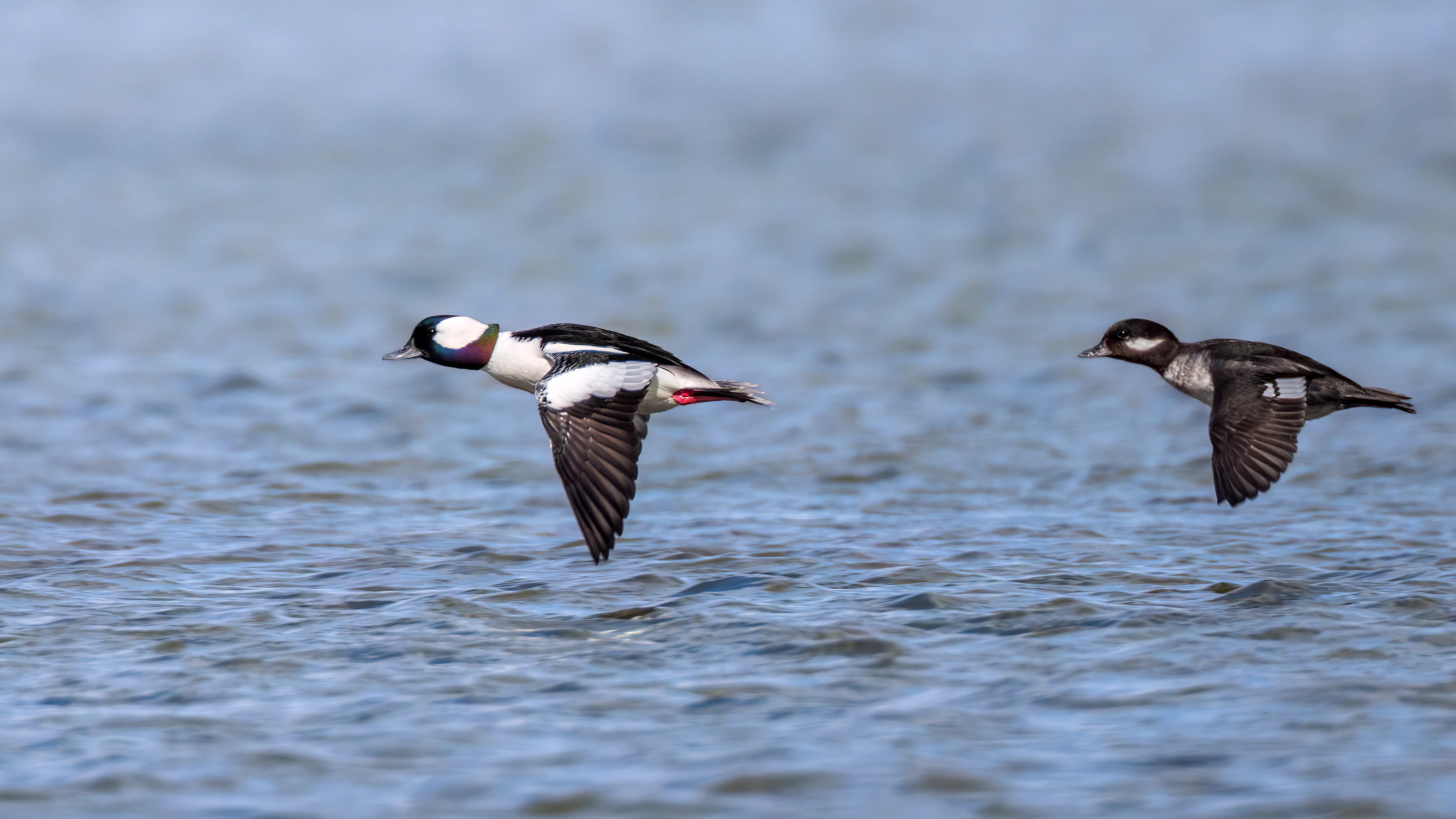
Some days the only shots diving ducks present are the low, fast, crossing chances you get as they buzz the edge of the decoy spread. And divers are fast, too, moving at speeds up to 70 mph in the case of canvasbacks on a mission. As with all long crossing shots, you need to move the gun in time with the bird and keep it underneath the duck so you don’t block your vision with the barrel. If you use a swing-through method, think of underlining the bird instead of painting it out of the sky. Focus on the bird’s beak, not the gun barrel, which should be a blur in your peripheral vision. You’ll have to lead crossing divers by a lot. A good place to practice this shot is on the skeet field. If you can get permission from the range, move back behind stations 4, 5, and 6 a few yards to increase the distance.
If there are more than one bird crossing, shoot at the leader. You may hit the duck two or three birds behind it. If so, act like you meant to do it and lead them by more next time.
Goose Pass Shooting
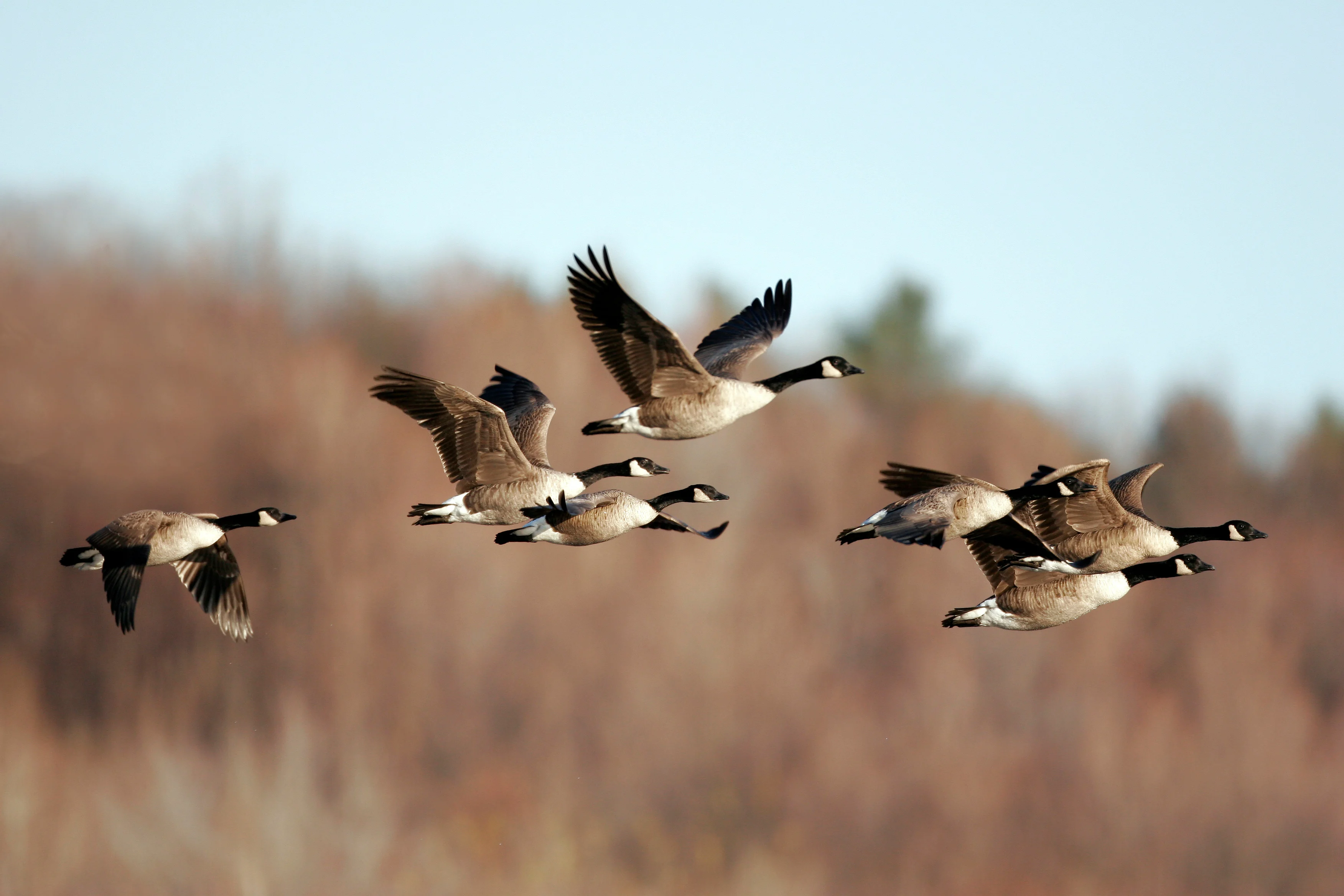
Like a lot of waterfowlers, I would rather shoot one goose backpedaling at 15 yards than two or three at 50. Some days, though, geese don’t cooperate, and you have to make the long shots or take no shots at all.
The key to making long shots is to move the gun very slowly. That runs counter to most people’s (including mine) inclination to whip the gun ahead of the bird as fast and as far as possible. I like to bring the muzzle through from behind on high geese, which helps me get the gun on the right line. You can be off by a little in lead and still hit the bird, but if you’re not moving the gun on the line of flight, you’ll miss. Start the gun behind, swing it through just fast enough to catch and pass the bird. Remember, a little bit of muzzle movement translates to a lot of lead when birds are at long range. Shoot as you pass the beak or when the lead feels right.
Estimating range when birds are overhead is tough. Usually geese are closer than you think when they’re overhead, and farther away when they’re down low, just as the moon looks huge on the horizon and tiny in the sky. Still, err on the side of caution as you estimate range, and be especially cautious if you’re hunting where a downed bird might be difficult to find, because sailing and losing a goose does neither you nor the bird any good at all.
Flushing Snipe
An interviewer asked me about the toughest birds to hit in wingshooting a couple of weeks ago. When it comes to flushing birds, I told him, the toughest might just be the Wilson’s snipe, if we’re talking only about flight characteristics, not flight characteristics plus habitat, which then tips the scales to chukar and ruffed grouse. Snipe are acrobatic fliers. Typically they fly low when they flush, cut back at least once, then rise. Perfectly camouflaged, they would fly away unnoticed if they didn’t have the habit of squawking on the flush. Snipe like fairly sparse, wet cover, and often they will flush somewhat wild as a result. There’s not much easy about shooting them, but it’s a lot of fun to try.
When you hear the “scaipe!” sound of a flushing snipe, get your eyes on it and give it an instant to straighten out, then move and shoot. If you miss, watch it. You may mark it down, but often snipe will climb high, fly around until they’re a speck in the sky, and eventually come back to the spot where they flushed, giving you a high incoming shot.
Grouse in the Trees
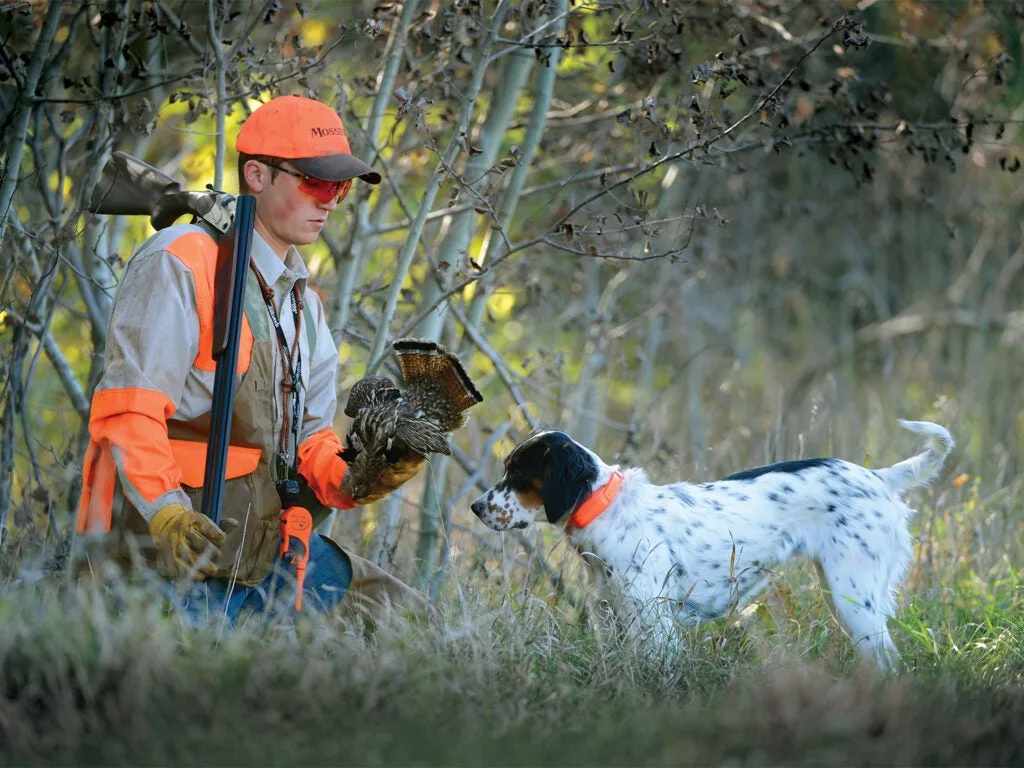
Several years ago, I walked in on a point at the edge of a northern Minnesota meadow that must have been an old beaver pond in the woods. Instead of the woodcock I expected, a ruffed grouse flushed and it’s one of the few I’ve seen out in the open. It looked huge, slow and lumbering, and the shot was ridiculously easy.
Put that same bird in thick, young forest, and it appears to be blasting through the branches at 100 mph. When a grouse flushes, you often get just glimpses of it, but that’s enough to read its line of flight. Move the gun along that line to somewhere ahead of the bird and shoot. Trust the width of your pattern to give you some leeway in terms of how much you lead the target, although in truth most shots at grouse are close enough that lead isn’t a big factor.
Remember, too, that you will hear more grouse flush than you see. You will see more than you shoot at, and you will shoot at more than you hit. Don’t let misses discourage you, and let the pellets fly. Years ago I took a pheasant hunting friend grouse hunting. My dog went on point, and I called him to come over and take the shot. The bird flushed. He did nothing. Finally, I couldn’t stand it any longer and I shot the bird. “Why didn’t you shoot?” I asked. “I was waiting for it to get into the open,” he said. If you wait until grouse are in the open, you’ll never shoot any. Shoot through the brush, and look hard for every bird you shoot at, because often you won’t see the grouse fall.
Chukar Over Your Head

Chukars, originally from the Pakistan-Afghanistan border, made themselves at home on similarly rugged terrain in the west: steep slopes covered with loose rock and cheatgrass. A coveying bird, they have the excruciating habit of running uphill from danger, then flushing and flying back to where they started when you get too close.
Shots at chukars are the opposite of most shots at flushing birds. They aren’t rising, they come overhead and drop—most of the time, anyway. Every once in a while, you get a gimme, and the first rule of chukar shooting is don’t miss the gimmes. I broke that one in embarrassing fashion on my very first shot at a wild chukar, a bird that stood in the open on the end of a big rock as flat as a sidewalk, pointed by two German shorthairs. I walked out and missed it in front of everybody.
It went, um, downhill from there. The best place to practice chukar shooting is on the sporting clays course, where you can find looping, dropping targets you won’t find elsewhere. Rather trying to follow the looping flight, keep the gun below the bird—always important, but even more so when it’s dropping—and shoot it as you would a crossing target, with a level swing.
Shots at chukars are tough enough if you’re standing flat-footed, but you rarely are. Often one leg is way higher than the other, or you’re sliding on volcanic rock. One top sporting clays competitor told me he sometimes practices while standing on a balance trainer, which he said was a “trained-professional-on-a-closed-course-level trick”, but if you’re up to it, it might help.

